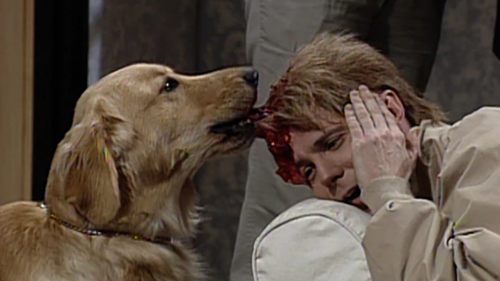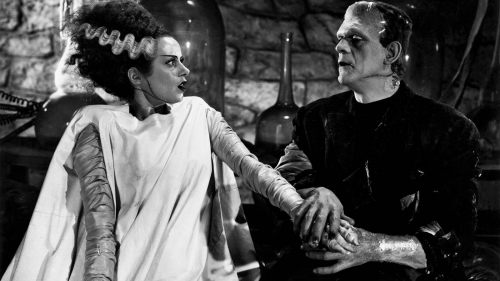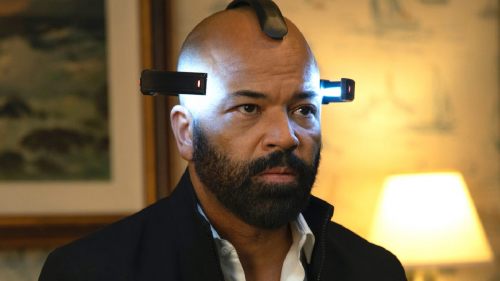Dilemmas Of Authority And Accountability In Damon Lindelof’s WATCHMEN
Who watches the Watchmen?
A famous refrain of Alan Moore, Dave Gibbons and John Higgins’s comic book phenomenon Watchmen, cribbed from the work of a Roman poet (literally translating as "Who will guard the guards themselves?”), is just as consistently evoked in Damon Lindelof’s adaptation, a sequel series seeking to re-contextualise the book’s worldview for the 2010s. It’s a question with two faces: it can be taken literally, or when applied a little broader, it asks how we keep the law-keepers themselves in check, and Moore’s hesitance to trust in people with all their pathologies and prejudices, wielding the power of life and death over others. In the first episode, Judd Crawford (Don Johnson), the soon-to-be-murdered Chief of Police in Tulsa, closes out a strategy meeting by starting a call-and-response chant with the question in the original Latin. He addresses a room full of masked policemen, framed in a shot that visually mirrors them to the masked white supremacists, known as the Seventh Kavalry, threatening then via video manifesto.
Following police detective Angela Abar (Regina King) as she unravels the mystery of her colleague and friend Judd’s murder in an alternate history Oklahoma, a fear of telepathic squid after the culmination of Ozymandias’ plan has made Watchmen’s version of 2019 an eerily different place. Following a mass attack on the homes of Tulsa cops in an event called The White Night, the government passed a law requiring all cops to wear a mask and maintain a secret identity - coupling with a nationwide rejection of technology and an internet to create an unsettling anonymity and lack of accountability.
In the comic, costumes and superheroics are more about self-assertion than protection. It goes hand-in-hand with government work - political assassinations, the suppression of protestors, and war - in Watchmen, superhero fantasies can too easily become fascist ones. Lindelof’s version looks to dismantle this fantasy and examine accountability on a local scale, focused in on the mechanics of policing. In this fictional Tulsa, there are attempted restrictions in place, such as the gun locks in squad cars, but these sanctions are quickly cast aside and emergency powers bestowed on them to apply force and bypass due process; even Angela takes to brutalizing suspects on little more than a hunch. It’s a paltry counterbalance to their power of anonymity that, in our world, would (hypothetically) be taken away from them by the modern practice of people filming encounters on smartphones (also, true to the ’no right answers’ nature of this show, the gun lock gets an officer killed).

Watchmen’s questioning of the inherent violence of policing is made even more complex by the fact that their target takes the form of white supremacists, but this is an element that also becomes increasingly complicated as the show rages on. The violent back-and-forth between police and white supremacists walks an uncomfortable line on its way to The Point, partly because, let’s face it, no one is that upset about Nazis getting beaten up, to the extent that it threatens to undercut the show’s messaging. One of Watchmen's most uncomfortable tensions comes from the fact that in the past and present police play a significant role in upholding white supremacy, as well as the suppression of other minority groups. The visuals of the first episode frequently mirror the police and the white supremacists they’re pitted against, expanding on this in later episodes which make the thesis of Lindelof's series that little bit more clear, that the badge is simply a license to brutalize people.
The first episode marks the badge in a recreation of one of the comic’s most famous panels, the Comedian’s smiley-face badge marked with a bloodstain resembling a hand on a clock ticking towards midnight. Here, the badge is a police badge - Judd himself is set up as The Comedian figure of Angela’s story, the center of a mystery slowly revealed to be an insidious and corrupt figure, only Judd is associated with American Nazism rather than Edward Blake’s violent nihilism. From the very beginning, Lindelof blurs the line between the practices of the police and the Seventh Kavalry, taking the aforementioned mirroring even further in the second episode reveal of Crawford’s KKK costume.
As of right now, though, the most worrying implication of Tulsa’s masks approach is the mention that other states might follow suit - as Senator Joe Keene (whom you might recognize as Mad Men’s Bob Benson!) promises Laurie that other cities like Atlanta want to jump on board with the mask law, referred to as the Defense of Police Act (which, yikes). It’s unclear that this method would also be applied to a target as obviously poisonous as white supremacy in these other states, and the notion of masked police becomes terrifying all over again - applied on a wider scale, it’d be like ‘blue lives matter’ ideals taken to their utmost extreme, the masks protecting these arms of the state from the dissent of the public and repercussions for their actions.

While a lot of questions remain to be answered, it feels like something of a relief that these questions are even being asked both in the show’s evocative imagery and mysterious, twisty writing. It’s a far cry from one Zach Snyder’s Watchmen adaptation, which obscures Moore’s anarchist worldview with fascistic visual worship of the physically-imposing Übermensch. American Hero Story, the show-within-a-show which could easily be read as a parody of Snyder’s film (as well as the work of Ryan Murphy), aping its worship of these violent assertions of power, complete with a desaturated color palette and excessive use of speed-ramping.
While depiction doesn’t always mean endorsement, it’s hard to shake the film’s relish of the sight of every gruesome bone break, mouthfuls of bloody teeth and other grotesque injuries inflicted by the protagonists. The imagery feels like a rejection of Moore’s politics, even if the dialogue is still (mostly) there. Even in the pilot, Lindelof is much more aware of the tension of making super-cops visually stylish. Where Snyder reveres the mask, Lindelof, as Moore before him, posits that their very existence indicates a problem - as Laurie Blake (played with a rough cynicism by Jean Smart) puts it, “you wear the mask to protect yourself from the pain”.
Laurie (once known as Silk Specter) now works as part of an anti-vigilante taskforce for the FBI. Ironically having become someone resembling her father after fearing becoming her mother throughout Watchmen, Laurie comes to Oklahoma and upends the Tulsa police’s superhero fantasy, approaching their strategies with an often hilarious skepticism. She cuts through their hedging and doublespeak with a satisfying bluntness - at one point asking “is that Tulsa for ‘beat the shit out of him’?” with regards to the interrogation of a suspect. Circling back to Judd Crawford’s evocation of the Roman poet Juvanal’s “who will watch the watchmen” line, a quote that elevates the police as mighty protectors, the thin blue line - self-aggrandizement all cut down to size by Blake simply saying “Tulsa’s not Rome”.

This is all complicated by the fact that Laurie is part of the same system, approaching the corruption of the Tulsa police with cold indifference. She is portrayed with a mixture of longing and resentment for her former comrades in arms, also leaping to violent action the instant she’s prompted. She is a fascinating figure, an insider and outsider of both vigilantism and policing, the line having blurred completely for her as she takes on her father’s surname, G-man career, and intense cynicism.
Of course, Watchmen is still in its early stages - and if we can expect it to match the structure of Moore’s story (which we likely can, considering its significant influence on Lindelof’s previous television work), we won’t be receiving the full answers to these ideological problems nor any narrative questions for a while yet, if at all - Lindelof far more withholding by nature than the giant info-dumps of Watchmen the comic. As with many voiced concerns following the first episode, the final three episodes (I’ve watched the first six) may or may run counter to everything I’ve said here. In the meantime, even if there’s no uncomplicated answer on hand, it feels miraculous that a superhero story is this thorny and tricky to untangle. “Do you know what the difference is between a vigilante and a masked cop?” Laurie asks Angela. When Angela responds that she doesn’t, Laurie quips “me neither”. Here’s to finding out if Lindelof manages an answer.



